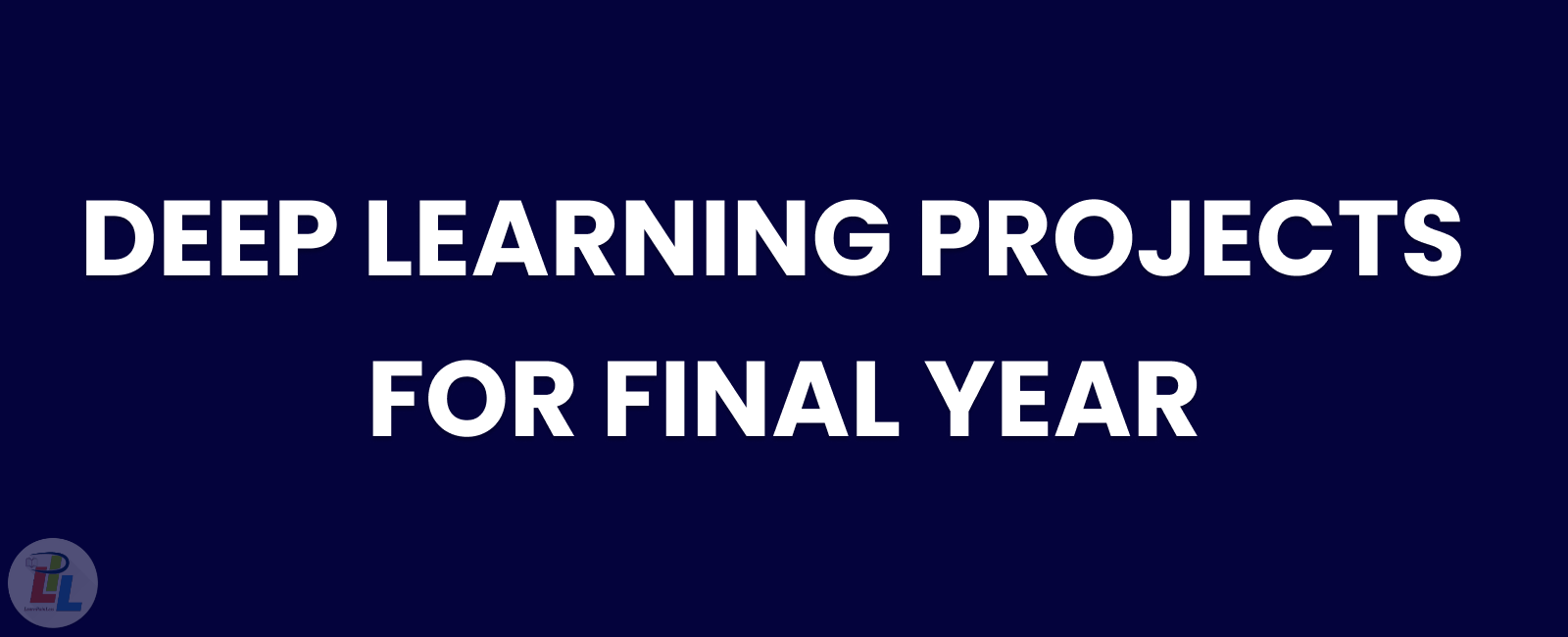Table Of Contents

Introduction
Deep learning, a subset of artificial intelligence, has become a cornerstone in technological advancements. As students approach their final year, the prospect of undertaking a deep learning project opens doors to innovation and skill development. In this article, we’ll explore the significance of deep learning projects for final year students, offering insights into project selection, technical challenges, and the impact on academic and professional careers.
Significance of Deep Learning in Final Year Projects
As students delve into their final year projects, incorporating deep learning adds a layer of sophistication. It enhances problem-solving skills, allowing students to tackle real-world issues with innovative solutions. The application of deep learning in final year projects not only demonstrates technical prowess but also prepares students for the challenges they might face in their professional journeys.
Choosing a Deep Learning Project
Selecting the right project is crucial. Identifying personal interests and strengths is the first step. Additionally, considering the relevance of the chosen project to the industry and exploring collaboration opportunities can enrich the project experience.
Examples of Deep Learning Projects
- Image Recognition for Medical Diagnosis: Develop a deep learning model that can analyze medical images (MRI, CT scans, X-rays) and assist in the diagnosis of diseases such as cancer, tumors, or other medical conditions.
- Facial Emotion Recognition: Build a system that can accurately recognize and classify facial expressions into different emotions using deep learning techniques. This could have applications in human-computer interaction or mental health monitoring.
- Natural Language Processing (NLP) for Sentiment Analysis: Create a sentiment analysis model using deep learning to analyze and classify the sentiment of text data. This could be applied to social media comments, product reviews, or customer feedback.
- Autonomous Vehicles: Develop a deep learning model for object detection and recognition to be used in autonomous vehicles. This project could involve training a model to identify pedestrians, vehicles, and obstacles in real-time.
- Gesture Recognition: Implement a deep learning model capable of recognizing hand gestures using computer vision. This could be applied to sign language interpretation or gesture-based control systems.
- Generative Adversarial Networks (GANs) for Image Synthesis: Explore the use of GANs to generate realistic images. You can focus on tasks such as generating artwork, faces, or even realistic scenes.
- Predictive Maintenance with Time Series Analysis: Utilize deep learning to predict equipment failures or maintenance needs by analyzing time-series data from sensors. This could be applied to industries such as manufacturing or utilities.
- DeepFake Detection: Develop a model to detect and identify deepfake videos or images. This project is relevant in the context of media authenticity and misinformation detection.
- Human Activity Recognition: Create a deep learning model that can recognize and classify human activities based on sensor data, such as accelerometer data from smartphones or wearable devices.
- Speech Recognition System: Build a deep learning-based speech recognition system that can convert spoken language into written text. This project can have applications in virtual assistants or transcription services.
Technical Challenges and Solutions
Overcoming challenges is inherent in any project. In deep learning projects, addressing issues like data collection, preprocessing, model selection, and performance optimization is crucial. We’ll explore practical solutions to navigate these challenges effectively.
Project Management Tips
Managing a final year project requires careful planning. Setting realistic goals, creating a timeline, and collaborating with mentors can streamline the project’s development process.
Showcasing the Project
Building a portfolio and presenting at conferences are essential steps in showcasing the project. These actions not only validate the effort put into the project but also open doors to potential employers and networking opportunities.
Impact on Academic and Professional Career
Undertaking a deep learning project in the final year can lead to academic recognition and positively impact job prospects. It also positions students as contributors to the broader research community, fostering a sense of accomplishment and pride.
Conclusion
In conclusion, embarking on a deep learning project in the final year is a transformative experience. It not only enriches one’s academic journey but also prepares individuals for the challenges of the professional world. The fusion of theoretical knowledge with hands-on application enhances skills and fosters a spirit of innovation.
FAQs
- Q: How do I choose the right deep learning project for my final year?
- A: Consider your interests, strengths, and industry relevance. Explore collaboration opportunities and seek guidance from mentors.
- Q: What technical challenges might I face in a deep learning project?
- A: Challenges include data collection, preprocessing, model selection, and performance optimization. Solutions involve careful planning and collaboration.
- Q: How can I showcase my deep learning project effectively?
- A: Build a portfolio, present at conferences, and actively network to maximize exposure and opportunities.
- Q: Will undertaking a deep learning project impact my job prospects?
- A: Yes, it can positively influence job prospects by showcasing practical skills and problem-solving abilities.
- Q: How can I contribute to the research community through my project?
- A: Presenting at conferences and publishing findings can establish you as a contributor to the broader research community.
Subscribe to our newsletter!
Quick Links
Legal Stuff
Social Media

